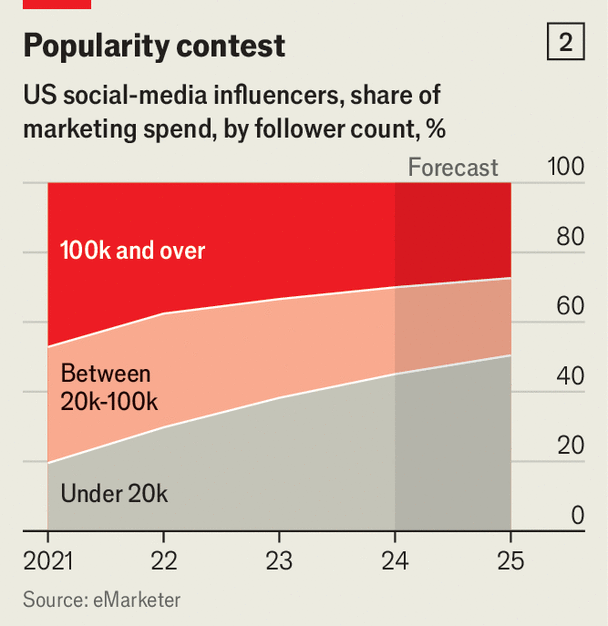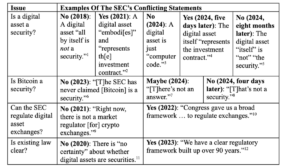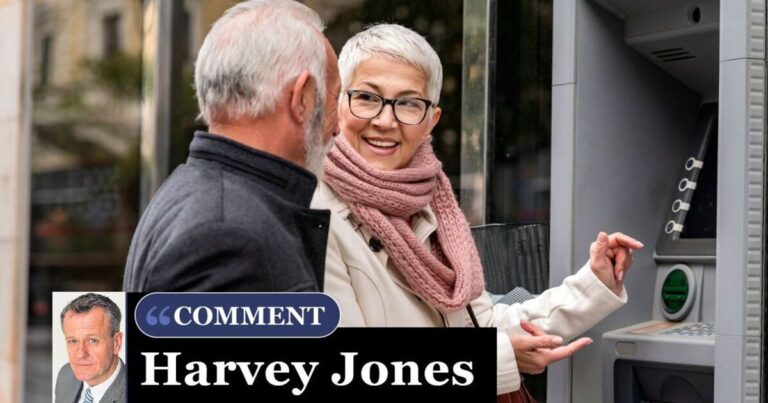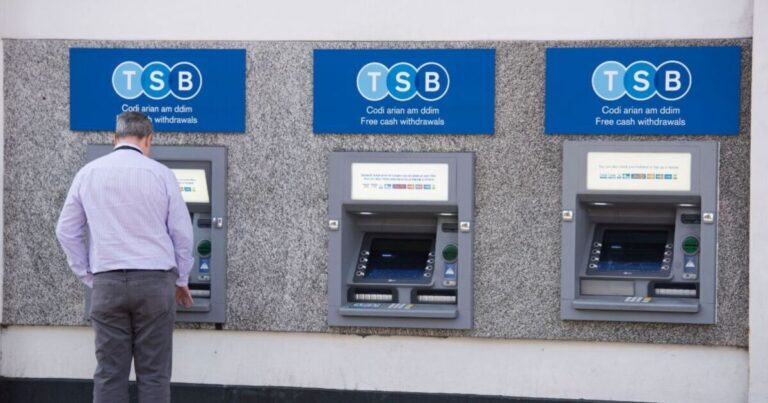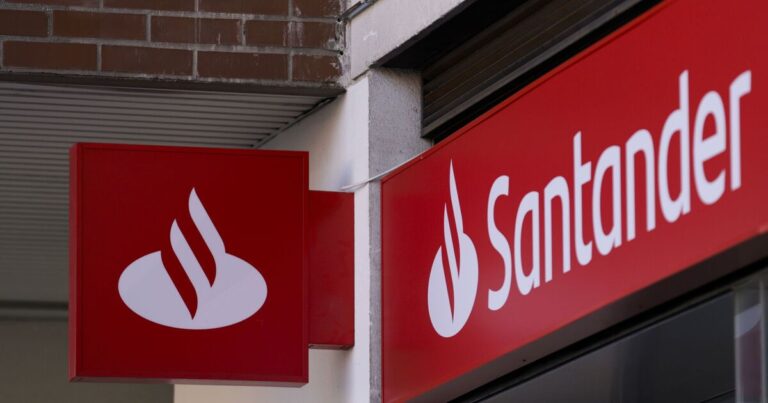Influencers are everywhere you look these days—including on America’s campaign trail. Some 200 social-media stars attended the Democratic National Convention in August, where they were entertained at lavish parties and on boat trips. A few even got to chat with Kamala Harris. Donald Trump has likewise given interviews to influencer bros such as Logan Paul and Theo Von in an effort to appeal to their followers.
Politicians are not the only ones to have spotted the growing sway of social-media stars. Over the past five years American companies have roughly tripled the amount of marketing spend they lavish annually on influencers, to $7bn, according to eMarketer, a research firm. Influencer marketing is part of every big campaign nowadays, says Mark Read, the boss of WPP, which owns advertising agencies such as Ogilvy and Mindshare. Walmart, a retail giant, has worked with TikTok stars Charli and Dixie D’Amelio. Louis Vuitton, a luxury brand, has run campaigns with Emma Chamberlain, a YouTuber.
Goldman Sachs, a bank, estimates that as of last year there were more than 50m influencers globally, from fashionistas on Instagram and comedians on TikTok to gamers on YouTube. It reckons that their ranks are swelling by between 10% and 20% annually. Some influencers view the work as a pastime; others aspire to make it their vocation, lured by stories of superstars making tens of thousands of dollars for a post and harnessing their legions of followers to launch brands of their own. Fully 57% of Gen Zs in America would like to be a social-media influencer, according to Morning Consult, a pollster; 53% describe it as a “reputable career choice”.
Spoiled for choice, brands have shifted their attention towards influencers creating content for narrower audiences, such as fashion tips for the over 60s, to better target those consumers. For companies, the influencer economy is more attractive than ever. Those who dream of making a living as a social-media star, however, should brace for disappointment.

Influencers—or “creators”, as many prefer to be called—have become integral to how consumers shop. According to research by Northwestern University and LTK, a platform that connects influencers with brands, nearly three-quarters of Gen Zs in America rely on influencers to help them choose what products to buy. So do a third of people who are boomers or older (see chart 1).
Meanwhile, influencers who came to fame on social media have now become models, actors and entrepreneurs. Cloudy Zakrocki, who made the move from fashion journalist to influencer almost a decade ago, says social-media stars used to be happy to receive a free pair of shoes or an invitation to an exclusive event. No more. Khaby Lame, a comedian with more followers than anyone else on TikTok, has collaborated on a collection with BOSS, a clothing brand. Fashion influencers like Jeanne Damas and Aimee Song have launched their own clothing lines. For the past few years influencers have starred in Super Bowl ads alongside Hollywood royalty and chart-topping pop stars. The biggest now hire legions of staff to help them create eye-catching posts, while agencies and other middlemen help them land and manage brand deals.

Yet even as social-media stars have become more famous, their relative importance in the influencer economy has dwindled. Since 2021 the share of spending on influencer marketing in America taken by creators with more than 100,000 followers has fallen from 47% to 30%; the share taken by those with fewer than 20,000 followers has surged from 20% to 45% (see chart 2). Celebrity influencers are helpful for companies looking to build awareness of their brand or alter how it is perceived by shoppers. But when it comes to persuading people to buy their products, companies are increasingly interested in influencers with a small but engaged group of followers. Marketing agencies help them manage many such contracts, sometimes using artificial intelligence (AI) to scout out influencers whose audiences best match their needs.
For companies, the ability to work with many creators to target narrow demographic groups, coupled with the growing amount of time consumers spend on social media, has made influencer marketing more attractive. In a survey by the Influencer Marketing Hub, another research group, 86% of brands globally said they plan to spend on influencer marketing this year, up from 37% in 2017, when the survey was first conducted. Nearly a quarter intend to spend over 40% of their marketing budget on influencer campaigns.
Yet for those hoping to make a career out of their social-media presence, the proliferation of influencers should be a cause for concern. Only 4% of influencers earn $100,000 a year or more from the work, according to Goldman Sachs. AI could worsen the situation, as “virtual influencers” begin to crowd social-media feeds: Aitana López, a gamer and fitness guru with pink hair and a face so symmetrical it could only have been generated by a computer, has 330,000 followers on Instagram.
Focusing on building a small fan base in a niche area may be a way for hobbyists to make some extra cash, but it will rarely be enough to let them quit their day job. What is more, a glut of influencers makes online fame more fickle. Even if a post goes viral, it doesn’t mean an influencer’s career is set, says Joe Gagliese, co-founder of Viral Nation, a digital-marketing agency. “If they’re not careful to make the most of that, there is another creator right behind them,” he says. “This industry is extremely volatile,“ points out Vanessa Chen, a fashion influencer better known by her Instagram name Vivacious Honey.
There is another problem with the influencer boom: consumers are growing weary of all those ads dressed up as entertainment. In a survey last year McKinsey, a consultancy, found that 68% of fashion consumers globally were unhappy with the amount of sponsored content on social media. Influencers first took off because consumers thought of them as “people they could trust”, says Anita Balchandani of McKinsey. To remain influential they need to strike a balance between getting paid and convincing followers they are still “authentic”, one of the industry’s favourite buzzwords. Being popular, it seems, is harder than ever. ■








